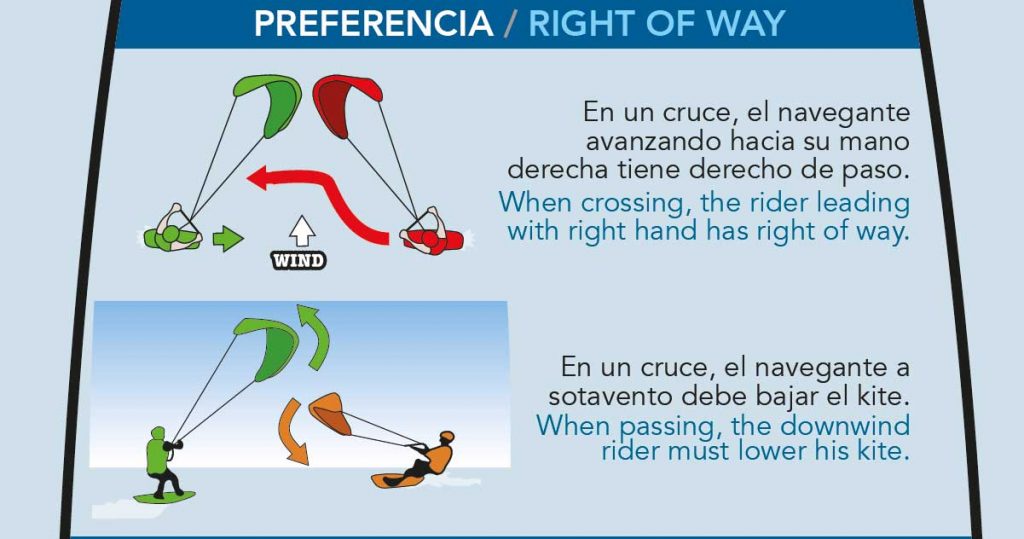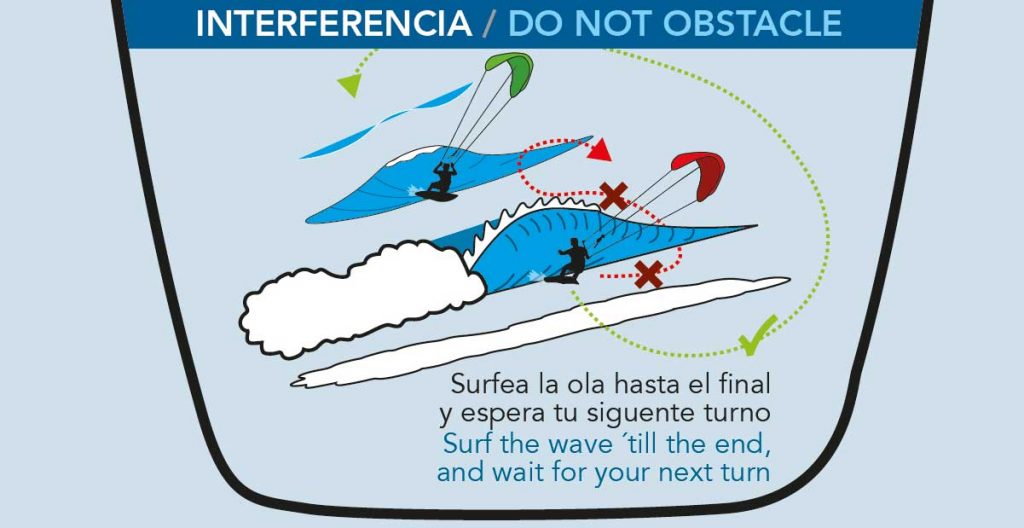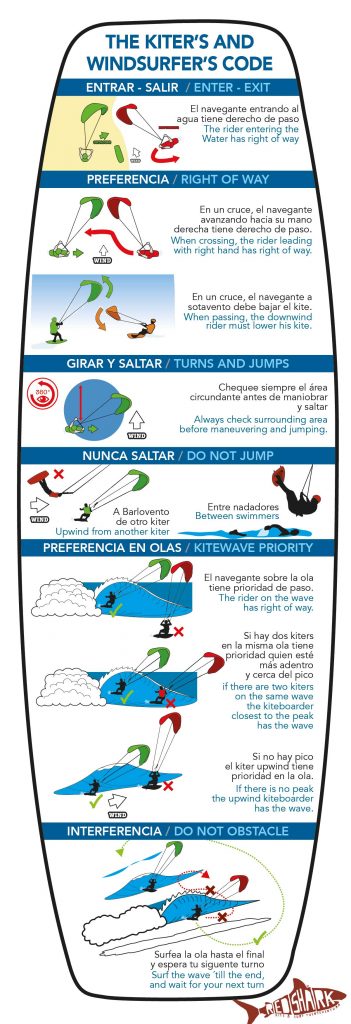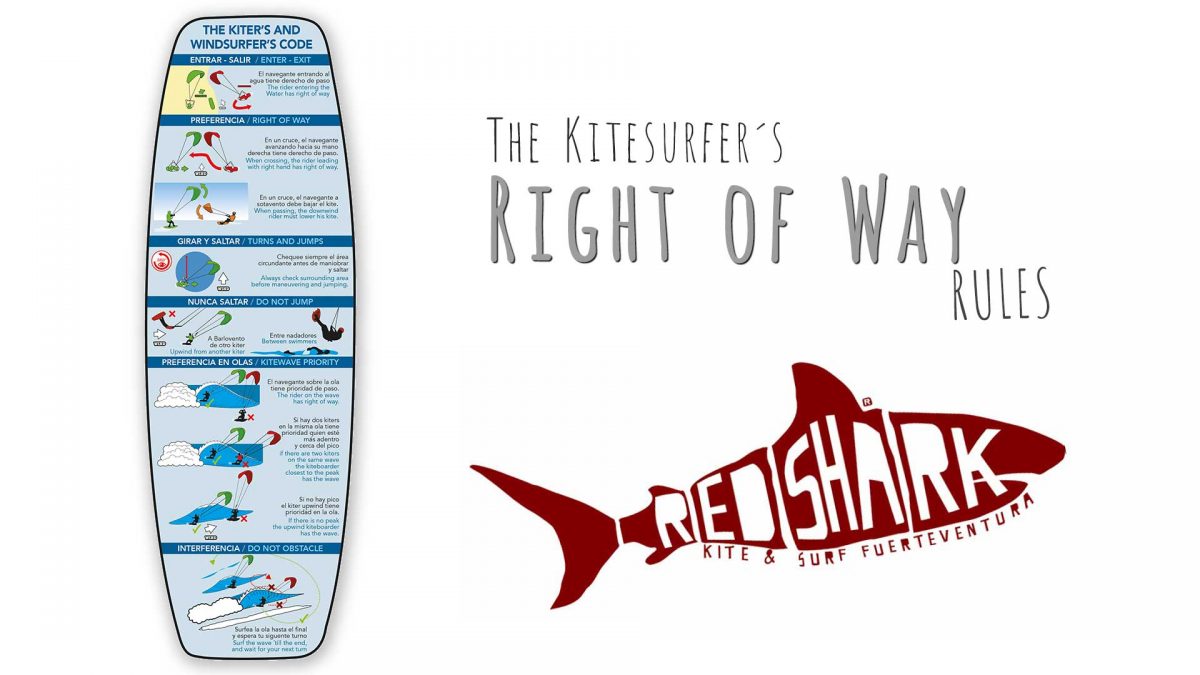The Kitesurfing Right of Way Rules should be taken into serious consideration in order to maintain a safe riding experience. Kitesurfing is an expanding sport that has to offer so many different possibilities: from general back and forth freeride, to freestyle jumping, wave riding, hydrofoiling and even race riding. All of these riding styles share a common safety criteria that should ultimately rely on one single judgement: Common sense.
The Right of Way Rules will determine who has priority or right of way within the riding area. This implies one rider yielding or getting out of the way of another rider on any certain condition. Different situations can be presented while getting in/out of the water, crossing other riders in the same/opposite direction, jumping or even riding a wave. Lets take a look at the basic rules in order to keep the riding area free of hazardous situations.
Just remember that the Kitesurfing Right of Way Rules should be applied whenever possible but Common Sense should always be taken into consideration in order to make the right judgement.
Getting in and out of the water

Rule: The rider entering the water has the right of way over that who wants to exit the water.
Why? The rider in land or closest to the shore line is more exposed to hard obstacles and wind turbulences. The rider in deep water can always change direction 180º and attempt a second approach to land as he is already riding in a safer area.
Heading Preferences

Rule 1: When 2 riders are about to cross each other in opposite direction, the kiter on a starboard tack (leading his right hand forward) has the right of way and should maintain a steady speed and heading to allow the other kiter to yield. This also means that the opposite kiter riding on his port tack (leading his left hand forward) must yield or give the right of way by changing his trajectory: passing downwind while lowering his kite or changing his navigation direction/heading.
Rule 2: When 2 riders are heading in the same direction and one is overtaking the other one, the upwind rider should rise his kite to fly it high while the downwind kiter should lower his kite.
Rule 3: When 2 riders are heading in the same direction the upwind kitesurfer must give way to the kiter riding downwind.
Why? This will keep enough distance from both kites to touch each other avoiding collision and consequently getting entangled.
Note: Understanding Starboard & Port tack
A kitesurfing board differs from a regular vessel so we should define a kitesurfer´s heading by considering the position of his kite within the wind window.
Port Tack: When the kite is flying in the left side of the wind window (between 12 and 9)
Starboard tack: When the kite is flying in the right side of the wind window (between 12 and 3).
Turns and Jumps

Rule: Riders should always evaluate their surrounding area before attempting any jumping manoeuvre and when changing their riding direction.
Keeping a 50m safety area downwind and a 30m safety area upwind will reduce many unexpected risks. Never jump upwind from another kiter if there is not enough safety area between both riders. Never jump among other beach users such as swimmers.
Kitewave Prioity

Special considerations should be applied when riding among waves and surfkiters as certain extended limitations could be encountered.
Rule 1: Rider on the wave has right of way.
Why? Kiters riding a wave have less “reaction time” and are exposed to a more extreme situation. Its harder to ride a wave than riding outside of them.
Rule 2: If 2 kiters are riding the same wave, the rider closest to the peak has priority. The other rider should clear/exit the wave immediately.
Rule 3: If there is no peak, the upwind rider has priority.
Why? The upwind/peak rider is exposed to the critical area of the wave while the other rider becomes a dangerous obstacle within the wave.
Do not become an obstacle

Rule: Surf the wave until the end and wait for your next turn patiently.
Why? There are waves for all riders, enjoy your wave and let others do the same. Snaking or jumping waves is not polite, and could lead to a dangerous situation.
Kitesurfing Right of Way Rules should make our riding spots more organised and safe, but never asume all kiters know them or are willing to apply them. Sometimes other riders may not really know the right of way rule of any specific situation or they may not be looking around them at all.
In case of entanglement it will always be safer for both riders to eject/activate their quick release systems to remove all tension from the lines. Entangled kites may behave erratically and may lead to unexpected/out of control relaunch. Tensioned lines can become very sharp and increase the risk of cutting something or someone. Releasing will always help to separate and untangle the lines with almost no effort or risk.
Remember never to exceed your limits and ride safely. Enjoy your rides. If you want to learn, progress or dig deeper into kitesurfing techniques you can always contact us to book your kitesurfing lessons in Fuerteventura.
Kitesurfing Right Of Way Rules


1 comentario